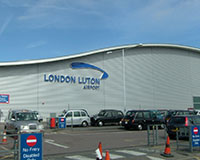Luton Airport has so much car parking capacity, an inspector was entitled to conclude that there was no need for an off-site “meet and greet” service using land without planning permission, the Court of Appeal has found.
Overturning a high court decision in favour of the off-site car park operators, Moore-Bick LJ disagreed with the finding of the judge below that the inspector had “muddled capacity and occupancy” when addressing the key issue of the amount of car-parking available at the airport.
He said: “The current low occupancy level suggests that the existing capacity (about three times the level of demand) is far greater than is required and projections of passenger numbers suggest that it will continue to be adequate well into the future.”
The Court reinstated an enforcement notice that had been quashed by the high court. The notice was issued by Luton Borough Council against GPS Estates, requiring it to cease use of its site on Latimer Road for “meet and greet” parking for up to 200 cars.
Collins J had found that the inspector had failed to deal with the true effect of a 2006 outline permission for additional airport parking, which had lapsed without being implemented.
However, Moore-Bick LJ said: “Although at the time it served the enforcement notice the council appears to have overlooked the fact that the outline permission for the Napier Park development had already lapsed, it is clear that by the time the matter came before the inspector both sides were well aware of the true position. Indeed, GPS relied on it in support of its argument that the demand that had been identified in 2006 would not now be satisfied by that development.
“In reaching his conclusion the inspector appears to have been heavily influenced by the evidence relating to the capacity and occupancy level of the on-airport car park. That is hardly surprising, since, in the absence of any reason to think that there was likely to be a significant increase in the proportion of passengers choosing to arrive by car, it provided a useful indicator of the likely future demand for parking spaces.
“The judge thought that the inspector had muddled capacity and occupancy, but with all due respect, I do not think that is so.”
GPS Estates v Secretary of State for Communities and Local Government Court of Appeal (Moore-Bick, Pitchford and Gloster LJJ) 5 March 2015
Stephen Whale (instructed by the Treasury Solicitor) for the appellant
Celina Colquhoun (directly instructed) for the respondent








